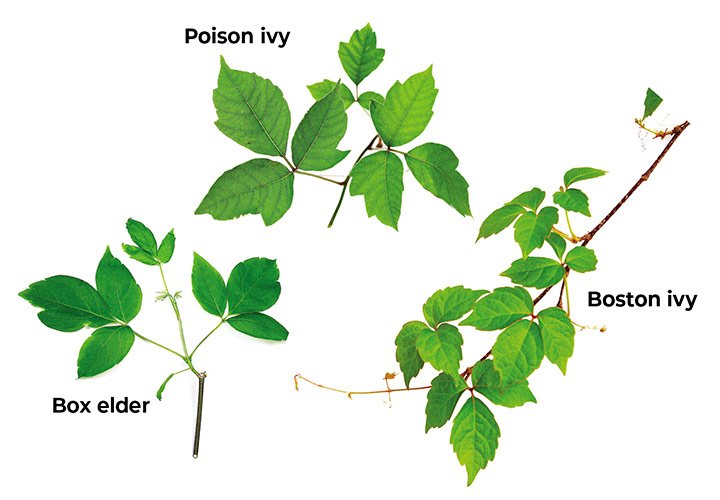Pro Tips: How Our Field Team Avoids Poison Ivy and Ticks
Many of us welcome summer with open arms, however a few factions of summer do not get such a warm welcome, namely poison ivy and ticks. Despite our region’s abundance of these plants and critters, there is no need to fret. A few simple steps can help you avoid the regrettable aftermath that comes after an unprepared encounter with these parts of the forest. Here is how our field staff avoids bites and rashes when working in the field over the summer.
Posion Ivy
Learn Your Plants
The best way to evade the infamous poison ivy rash is to avoid the plant all together. Learn to identify the plant before going into the field. Poison Ivy is an allergenic plant that grows as a vine. The most recognizable part of the plant is the three leaflets. The stalk on the middle leaf is longer than that of the two leaves on the sides. The edges of the leafs can be smooth or serrated and the surfaces can be glossy or dull. The larger vines are easy to identify due to their “hairy” appearance which is actually from tiny roots along the vine. To avoid living in total fear of all plants, learn the look alikes too such as the Virginia Creeper, Box Elder, and Boston Ivy.
You’ve Touched Poison Ivy, Now What?
Sometimes you simply can’t avoid getting into poison ivy; the plant is unavoidable for much of our summer field work. Luckily, the oils produced by ivy, “urushiols,” can be washed off. We use Tecnu, but dish soap works too. These soaps have a degreasing agent that readily removes the urushiols from your skin. If you don’t have soap, sand from the soil and water can help remove these oils. People differ on opinions about how quickly the oils must be removed, but opinions range from 30 minutes to 4 hours. We’ve found the sooner the better. As for your clothing and gear, a ride through the laundry with detergent with hot water will remove the oils. Be careful to watch spots that might have oil such as the arm rests in your car or desk. Warm water with dish soap can rid these areas of the urushiols.
Poison Ivy Myth
There is a widespread myth that touching a poison ivy rash on you or someone else can cause it to spread; it’s contagious. Poison ivy rash is not contagious and you can not get the rash from simply touching another infected area. However, the oils are persistent and spreading can occur if oils are not completely washed off of skin or clothing and gear. So, as long the oils has been removed, you have nothing to worry about.
Ticks
At-home Preparation
Treating Clothes with Permethrin: Many of us spray our clothing with a chemical called permethrin before going out into the field (be sure to treat clothing when the clothes are not on you). This insecticide is especially effective at repelling ticks and lasts up to 6 weeks or 6 washes on clothing. Permethrin should not be applied to skin. For you cat owners, the chemical is known to be harmful to your feline friends so please use caution. In the environment, permethrin is broken down by sunlight or microorganisms; you can learn more about the environmental fate of permethrin here.
In the Field
Apply Skin-safe Bug Repellent: Immediately upon arriving to our work site, we apply a bug repellent that is safe for application directly on skin. We use either picaridin, DEET, or a natural product. There are pros and cons to each option. DEET is especially effective with mosquitos but seems to not be as effective with ticks when compared to picaridin. Further, DEET will damage synthetic gear and clothing over time. If ticks are your main concern, Picaridin seems to be the superior option. We have found that the natural products are not quite as effective at repelling ticks but are often chosen due to health concerns. You can learn more about these products here.
Tick Removal
Tweezers then Alcohol: Sometimes a tick prevails even if all the proper precautions have been taken. After a day in the field, we promptly head home to shower and check for ticks. To remove a tick, use a pair of tweezers and pull straight up (no twisting motion as this may leave part of the tick embedded). After removing the tick, clean the area with rubbing alcohol or soap if alcohol is not available, then monitor the bite for any signs of infection.
We hope some of these tips help keep you tick and rash free while on the trail this summer. With the proper steps, you can hike, climb, and explore worry free!





